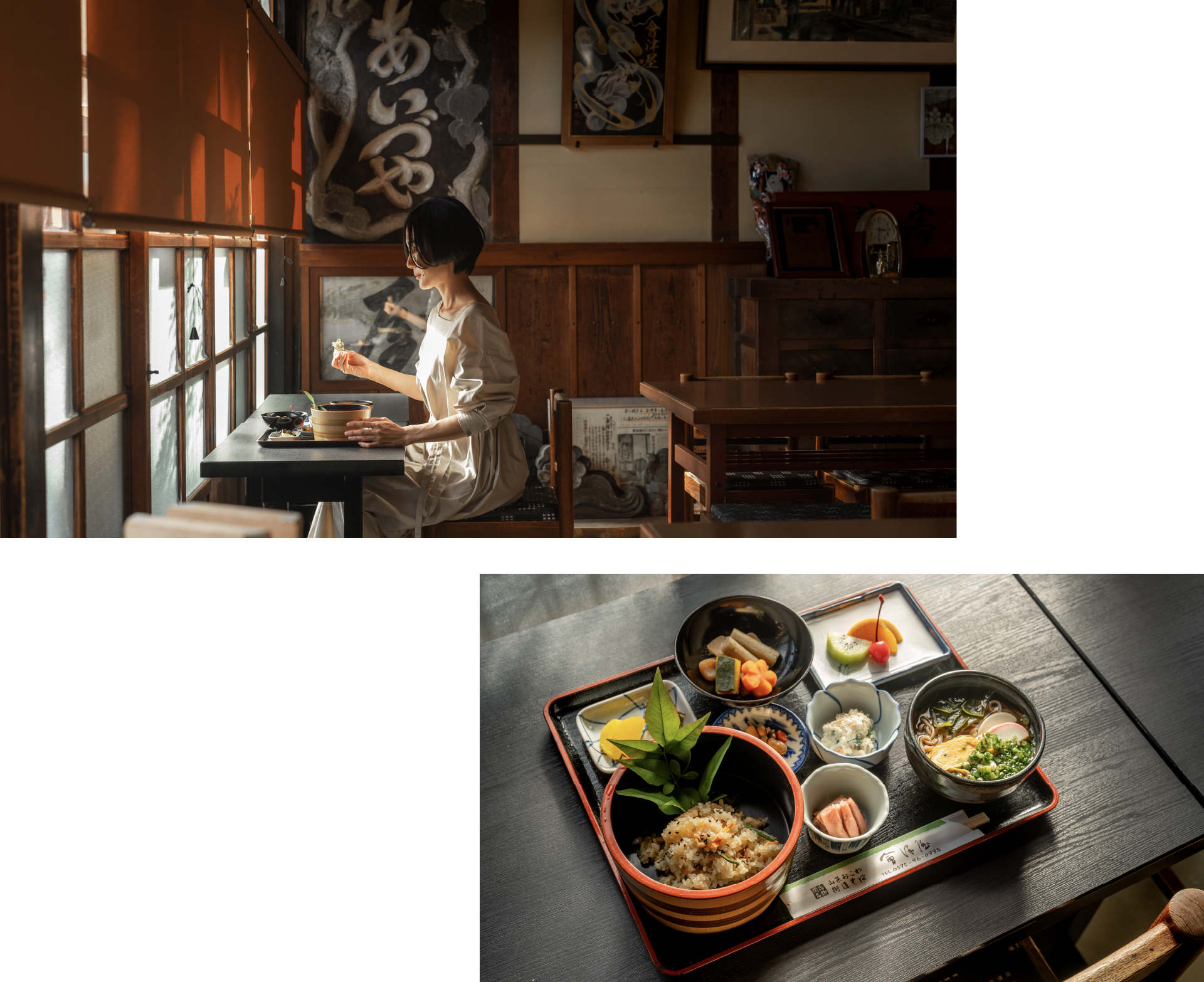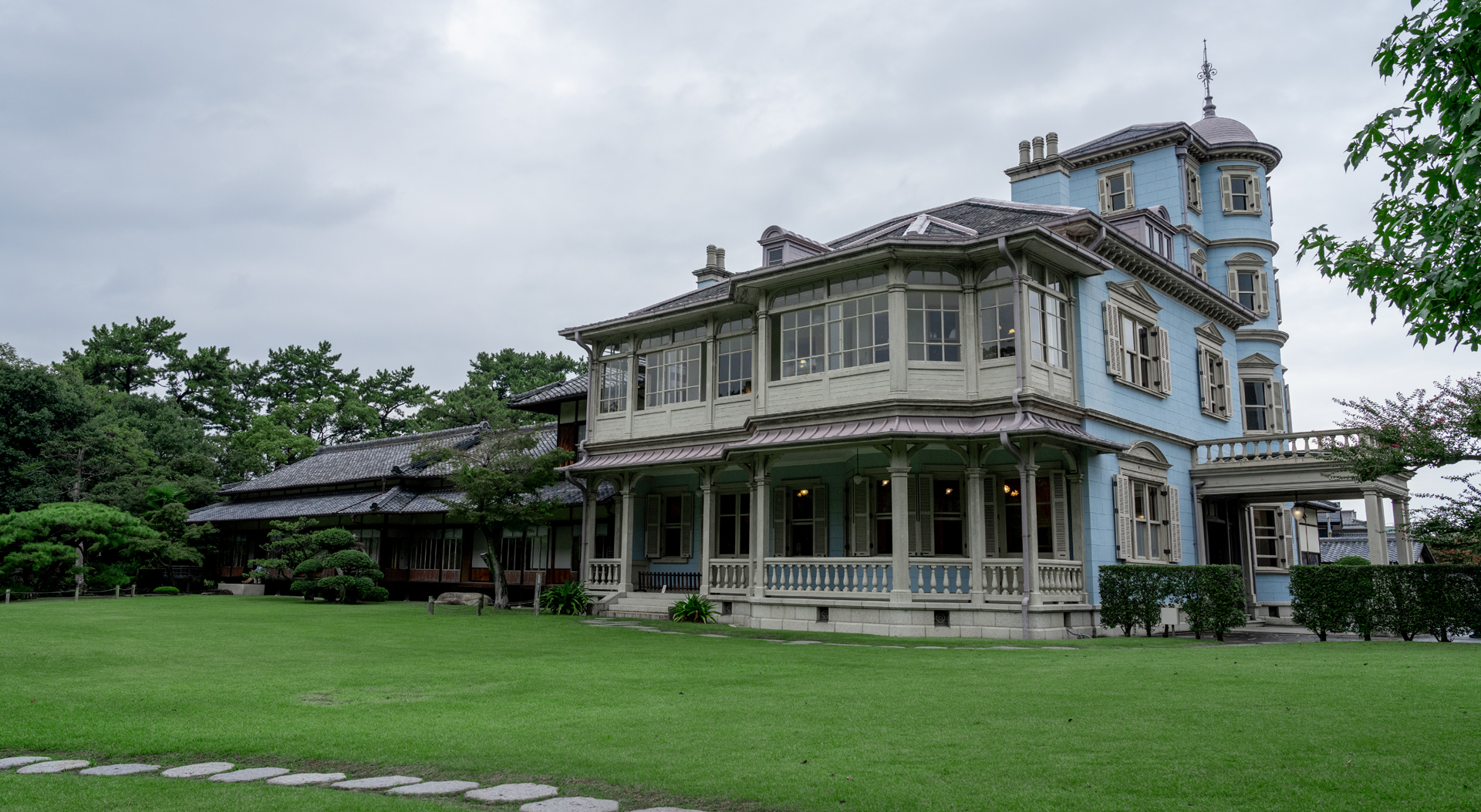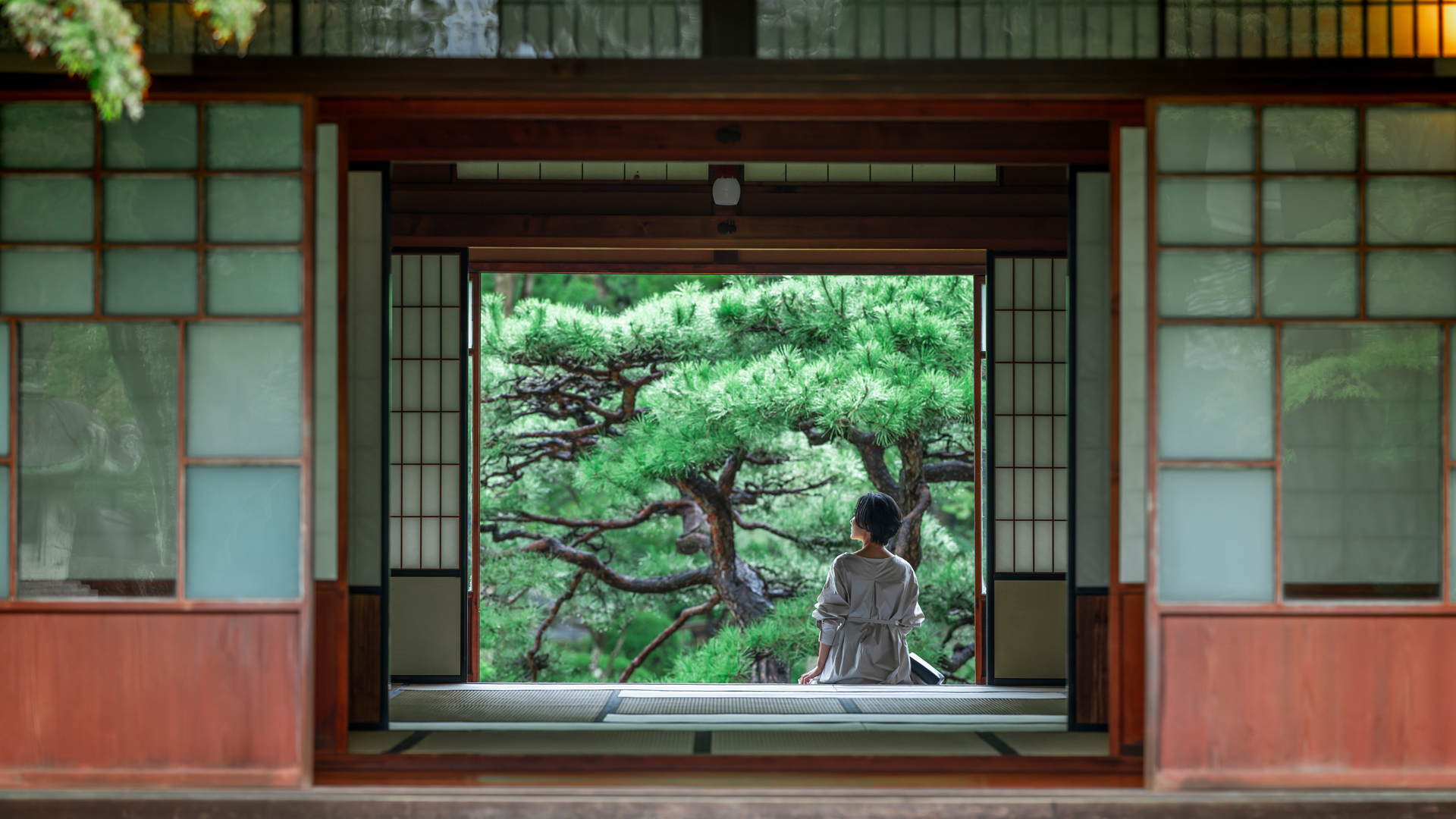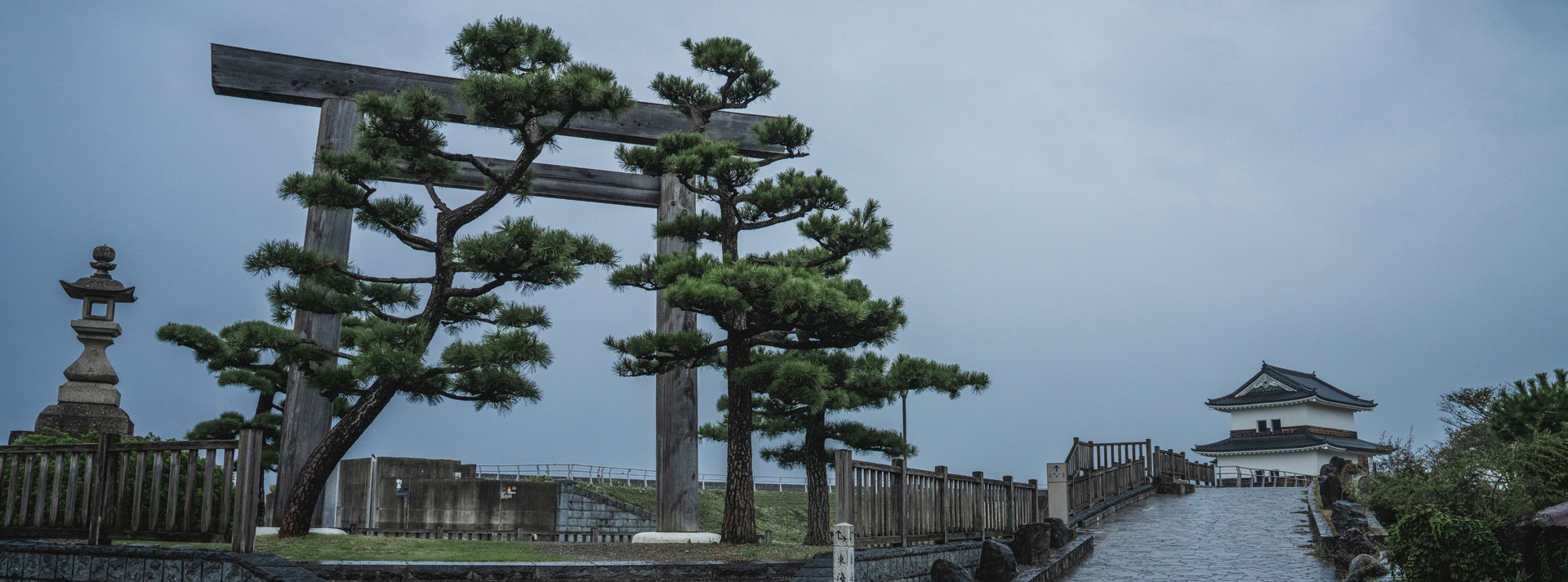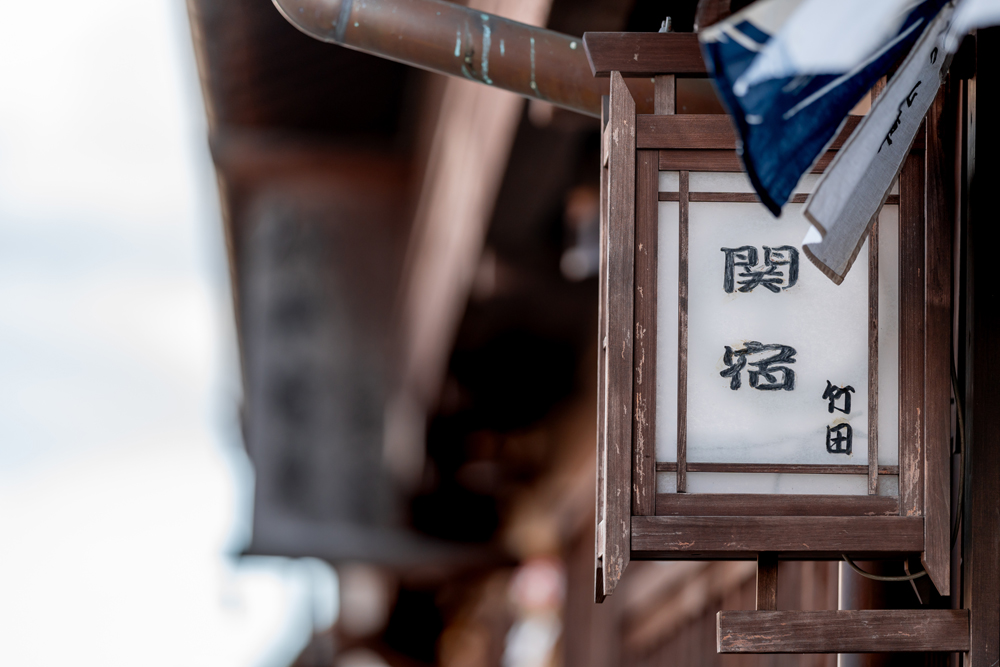2. Buildings that tell the story of the Meiji and Taisho periods
"Rokkaen"
Rokkaen (former Moroto Seiroku Residence) is located about 150m from the Shichiri no Watari site.
Construction began in 1911 and was completed in 1913, and it is now carefully preserved as an important cultural property that can be visited.
The Meiji and Taisho periods were a time when Westernization of clothing and lifestyles spread among the general public. At the time, building a Western-style mansion was a status symbol for businessmen. Rokkaen has a similar background, having been built as the new home of Moroto Seiroku II, a businessman known as the forestry king.
Historical footprints of modern Japanese architecture
The Western-style building at Rokkaen was designed by Josiah Conder, a British architect who was the first to bring full-scale European architecture to Japan and is known as the "father of modern Japanese architecture." Conder is famous for designing Rokumeikan and Nikolai Cathedral, among others, but of the more than 70 buildings he designed across Japan, only about eight of them remain. Of these, Rokkaen is a valuable work as it is the only remaining residential work outside of the Kanto region.
Additionally, although it was customary during the Meiji and Taisho periods to build Japanese-style buildings adjacent to Western-style buildings, it was common for a Japanese-style building as large as Rokkaen to be built in a "single-wall" structure with a Western-style building. Apparently it was a very rare thing. At Rokkaen, you can enjoy the physical connection between Japanese and Western cultures both indoors and outdoors. It is very interesting to be able to get a close look at what Japan was like in the past, as it progressed toward Westernization over time.
The Western-style building and Japanese-style building within the gardens were designated as Important Cultural Properties of Japan in 1997, and the other six buildings have been designated as Tangible Cultural Properties of Mie Prefecture.
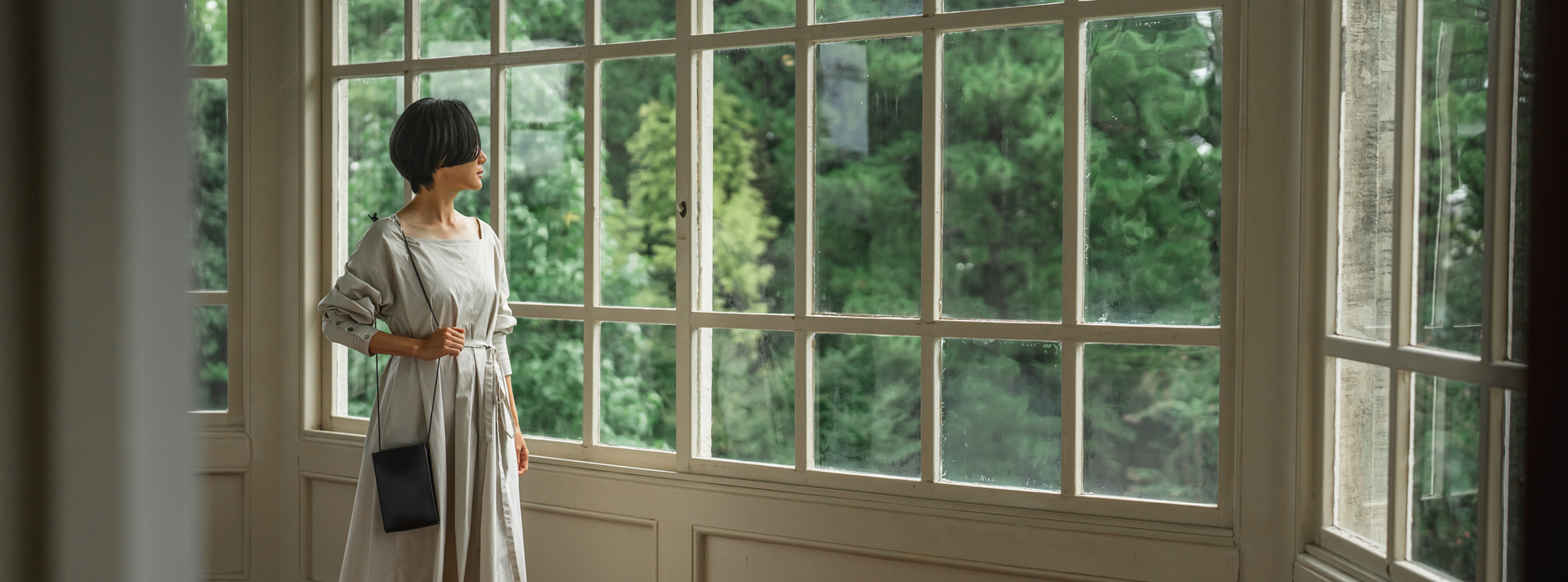
The city and scenery of the past
Important cultural properties that make you imagine
Rokkaen building group is extremely valuable in that it has not been moved from its original location and has been preserved as it is in the town of Kuwana.
At the time Rokkaen was constructed, the Ibi River, which flows nearby, had a lot of boat traffic, and there were about 10,000 cherry blossom trees along the embankment, creating an atmosphere full of emotion.
Seiroku Moroto seems to have been very fond of the townscape. The tower of the Western-style building was originally designed by Conder and had three floors, but Seiroku requested that it be able to overlook the Ibi River, so it was suddenly changed to four floors.
The area surrounding Rokkaen is home to historical sites such as the Shichiri-no-Wataru Ruins and the Kuwana Castle Ruins, as well as a charming townscape that still stands today. When you visit Rokkaen, you should also enjoy its location.
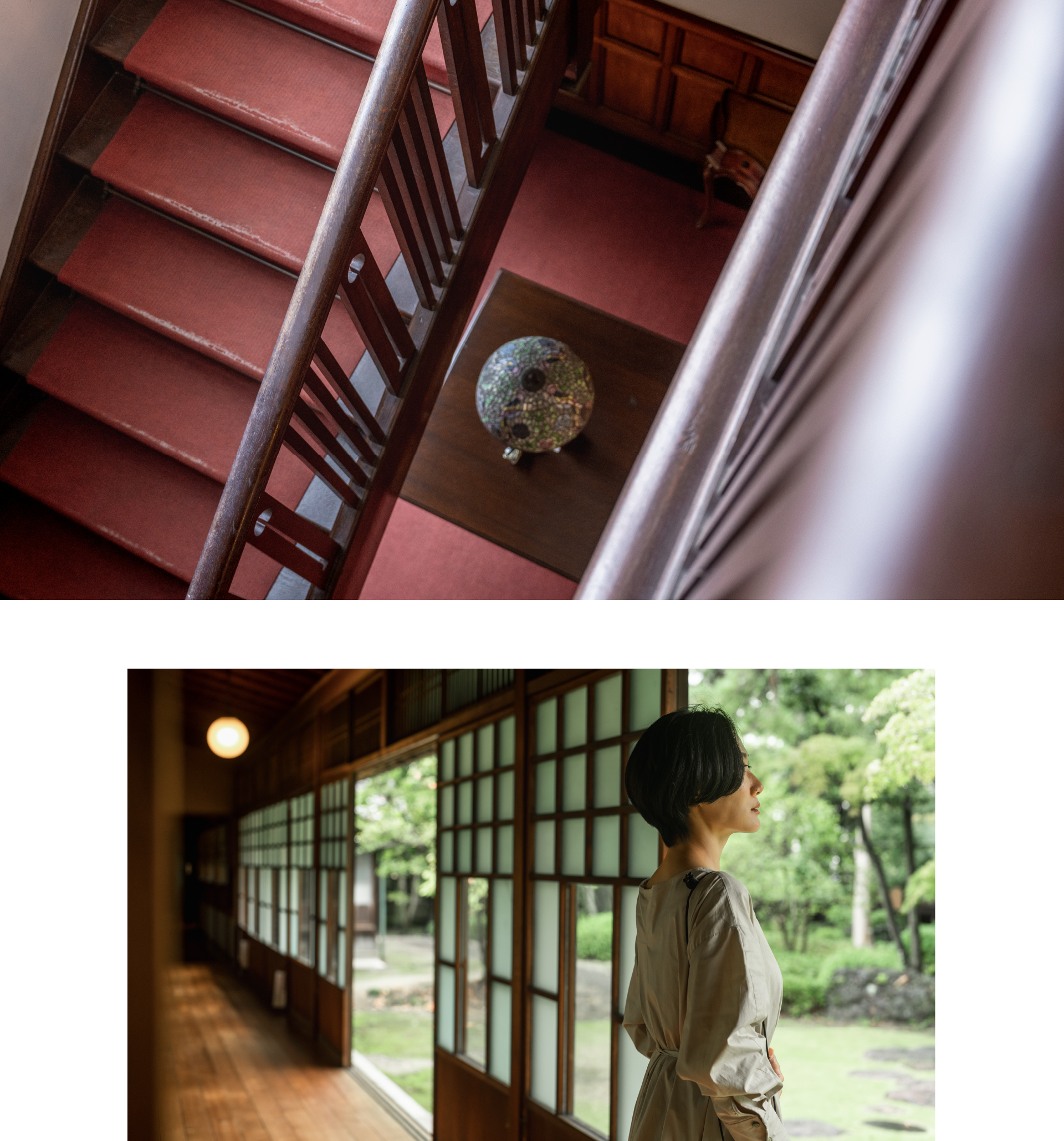
3.A traveler ate at Oiwake in hinaga
"Naga-Mochi"
If you continue south on the old Tokaido from Kuwana, you will arrive at Yokkaichi-juku, the 43rd station of the 53rd station on the Tokaido.
hinaga, located in Yokkaichi, was called `` hinaga no Oiwake'' and was the intersection of Tokaido and Ise Kaido roads.
It is said that Oiwake in hinaga was once crowded with tourists visiting Ise Shrine.
The handmade bamboo fan `` hinaga Uchiwa'', which is now a traditional craft, is said to have developed during the Edo period, when people passing by on the highways and people visiting Ise Shrine often bought them as souvenirs. ing.
Also, along the old Tokaido, including hinaga, there were many shops that sold mochi to help people save energy for long journeys, so the old Tokaido is also known as the ``Mochi Highway.''
When you actually get your hands on items that can still be enjoyed today, such as hinaga fans and traditional mochi sweets, you can imagine more vividly the bustling streets of the past.

Naga-Mochi, invented by the founder of Sasaiya, Hikobei
Loved since the Sengoku period
Historical confectionery
"Naga-Mochi" in hinaga is a mochi confectionery made by Sasai-ya, which was founded in 1550.
It was named `` Naga-Mochi'' after the place name of hinaga, and Todo TakatoraTodo who later became the 360,000 koku feudal lord of the Isetsu domain, ate Naga-Mochi was an ashigaru and was impressed by its taste. There is also an anecdote that he highly praised the name, saying, ``Eating rice cakes that bring good fortune in battle brings good luck.''
Naga-Mochi is characterized by its long, flat appearance. It is made by cooking Hokkaido-grown red beans using a unique method, carefully pounding selected domestic glutinous rice, wrapping it in bean paste, stretching it flat, and baking it on both sides until it is fragrant.
When you taste it, the bean paste has a refreshing sweetness without being too bitter, and the grilled rice cake gives it a nice aroma. The flat, rolled-out shape has a light texture.
The simple taste that you will never get tired of eating will gently soothe the fatigue of your travels. I can almost imagine the travelers passing by on the highway eating Naga-Mochi and taking a breather.
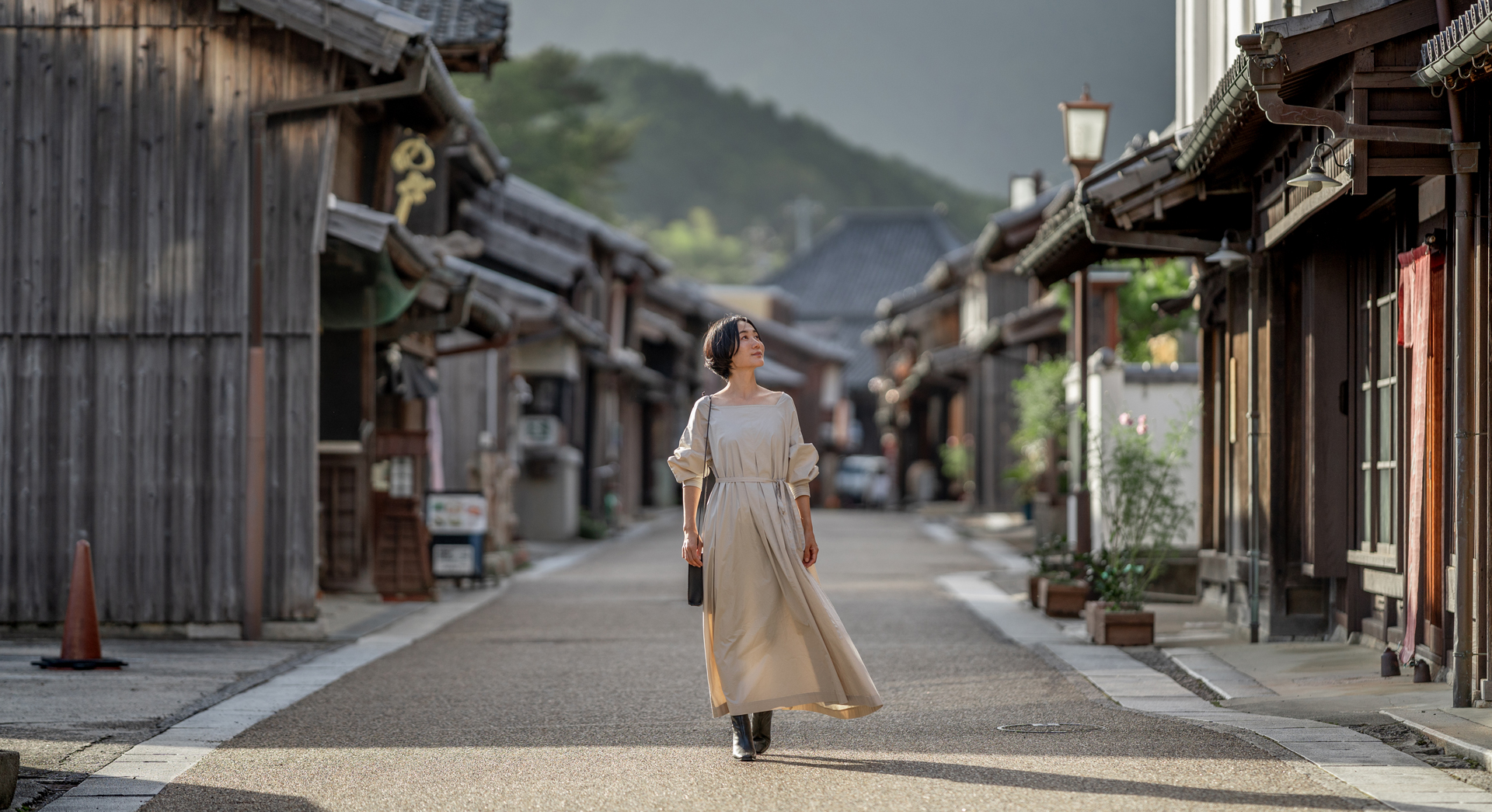
Tokaido Sekijuku road
4. Scenery from the Edo period remains
"Tokaido Sekijuku"
Next, we will visit Sekijuku, the 47th stop on Tokaido.
Sekijuku still retains much of its old townscape, and the sight of about 200 townhouses from the Edo to Meiji periods stretching along the highway for about 1.8 km is a sight to behold.
It is the only one of the 53 stations Tokaido that has been selected as a nationally important preservation district for groups of traditional buildings.
Sekijuku has a history of flourishing as a transportation hub.
Oiwake to the west of Sekijuku branches off to Yamato Kaido which leads to Nara, and Oiwake to the east branches to Isebetsu Kaido. For this reason, during the Edo period, it was crowded with groups of feudal lords performing sankin kotai and travelers making pilgrimages to Ise.
Connecting Sekijuku with Edo and Kyoto through sweets
Hospitality at “Sekinoto”
Sekijuku is home to Fukagawa-ya, a long-established Japanese confectionery shop that was founded in 1642 and has been around since the time of the third Tokugawa shogun, Iemitsu.
The mochi confectionery `` Sekinoto'' has been made since the company's first generation.
Bite-sized mochi sweets made with strained red bean paste wrapped in gyuhi mochi and sprinkled with Wasanbon, a specialty of Awa, are known for their elegant taste and were popular among feudal lords during the Edo period. Rumors of its popularity reached the Imperial Court in Kyoto, and it even became the official confectionery of the Omuro Imperial Palace (Ninnaji Temple).
We spoke to Aki Hattori Kichiemon, the 14th generation owner of Fukagawaya.
“Since Sekijuku was a post town just across the mountain pass, there were many feudal lords and travelers taking a break.In order to entertain the feudal lords who were not satisfied with the tricolor dango and botamochi that the common people ate, Sekinoto to was It seems that they decided to use high-quality white sugar such as Karasanbon and Wasanbon, and because they used high-quality materials, it is said that all the feudal lords bought it in droves.''

"Sekinoto" is a famous confectionery with an elegant taste and appearance
Even today, Sekinoto continues to inherit and maintain the same formula and manufacturing method as in the Edo period.
"It's a very time-consuming process, but I realized that it was done with the intention of showing hospitality," says Hattori.
This is because, in recent years, a food analysis company investigated Sekinoto and found that it can last for three and a half years even when stored at room temperature. (*The best-before date set by the Ministry of Health, Labor and Welfare is 15 days)
Hattori: "Sweets with bean paste inside generally don't keep well, but Sekinoto 's manufacturing process is ingenious, so they last a long time. That's why they were able to be carried back to Edo or Kyoto on foot."
The bean paste is made in-house and is carefully cooked over time without using a single drop of water, then left to rest for two days to a week depending on the climate. By doing so, the final sugar content of the bean paste will reach over 80 degrees, which will extend its shelf life.
``I believe that the first generation's idea of ``hospitality'' was to provide food to people from as far away as possible.Inheriting the idea that has been passed down from generation to generation since the first generation, as a historical Japanese confectionery shop, we want to pass on the culture of Edo. With all of this in mind, we continue to adhere to the ancient manufacturing methods."
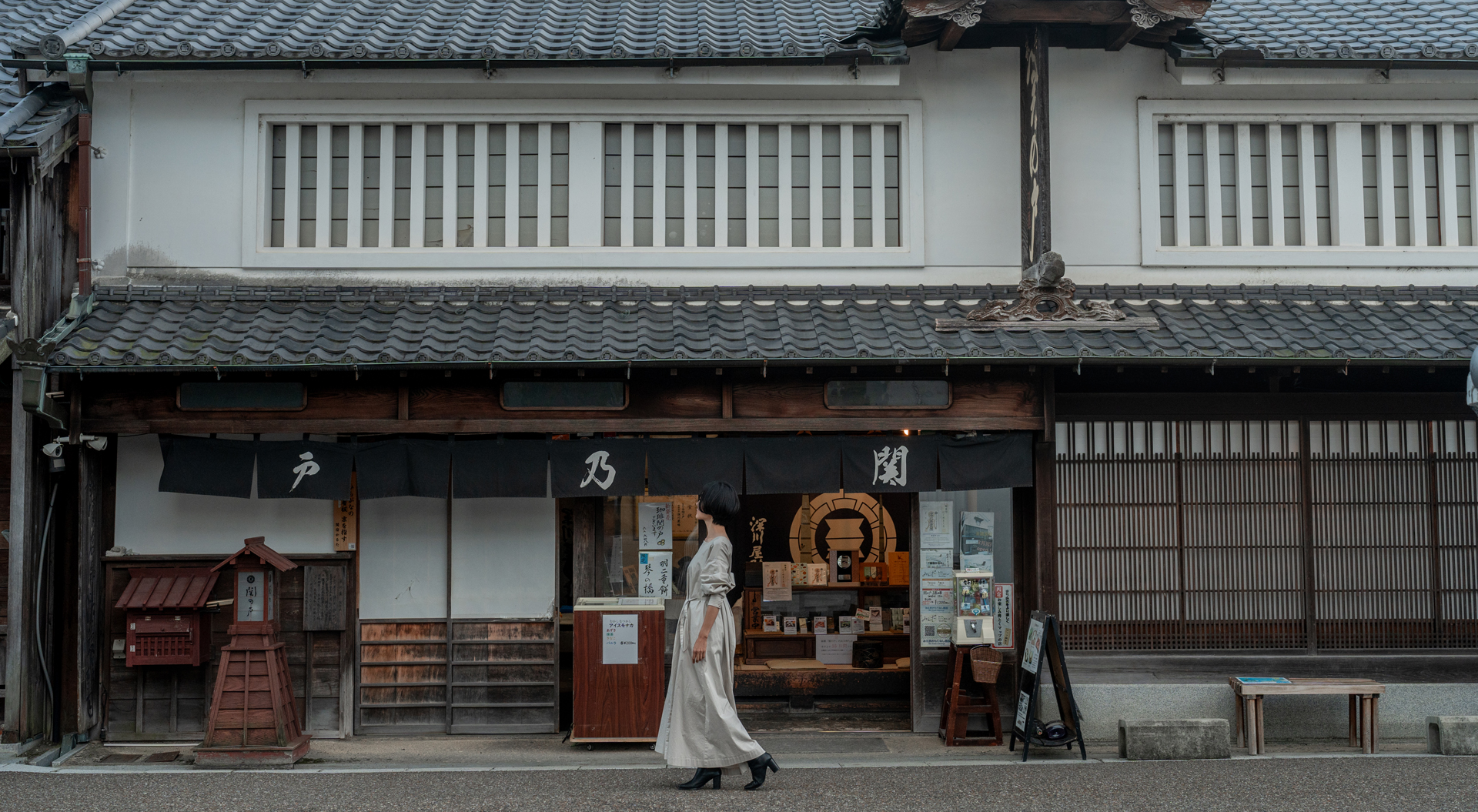
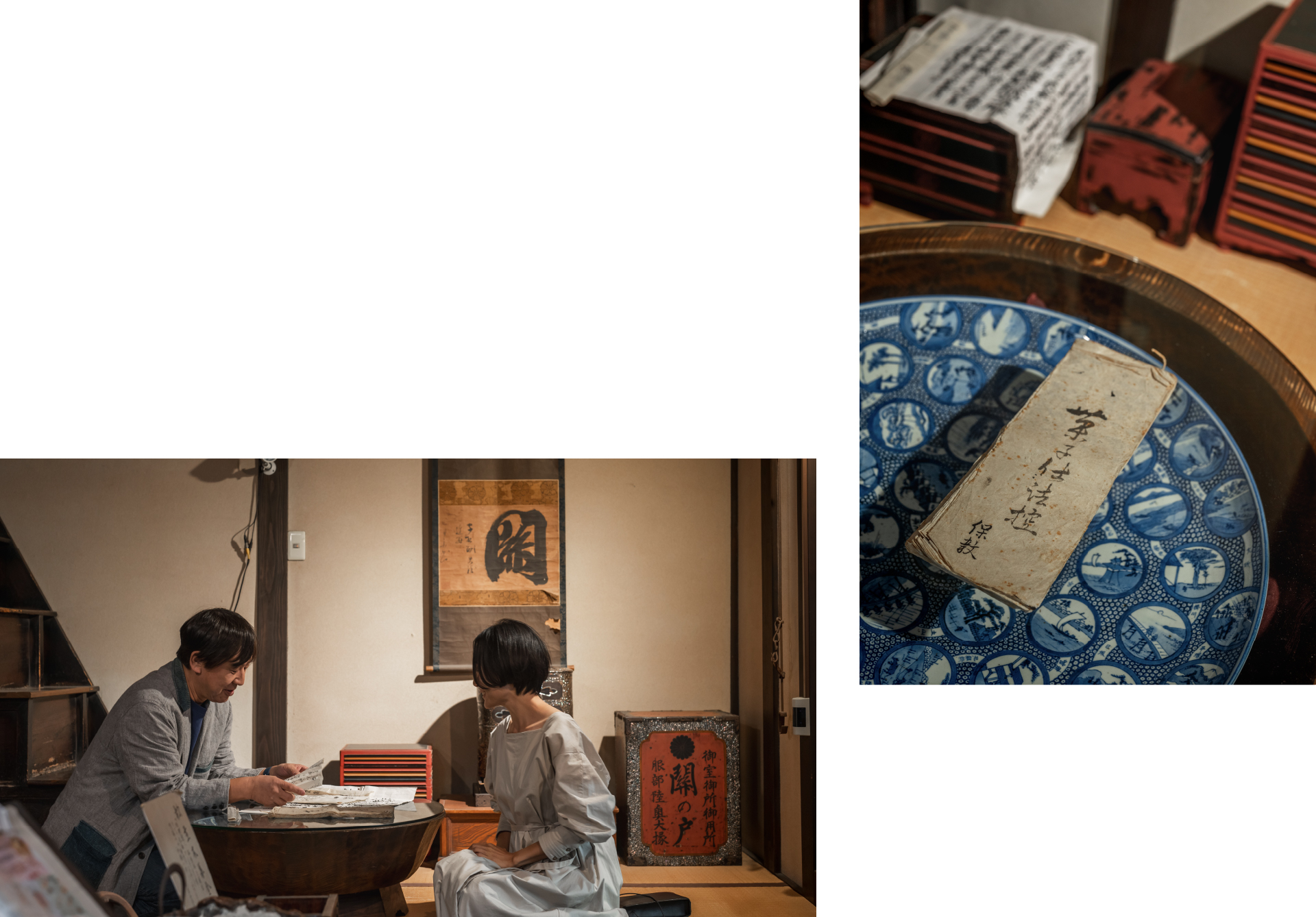
(Photo on the left) Hattori Ken, the 14th head of the family.
Documents describing the manufacturing process of Sekinoto, tools and other items from the Edo period onwards are still carefully stored.
At "Okeju" along the highway
See the craftsmanship up close
As you walk through Sekijuku, you'll notice craftsmen working with serious eyes behind the glass doors facing the street.
Founded in 1882, ``Okeju'' is a traditional oke shop that has continued to make wooden barrels using techniques that have been passed down from generation to generation.
As Seki was a post town, there was a great demand for buckets for washing feet, and wood was easily available, so bucket making is said to have been popular.
Today, Okejyu is the only Oke shop left in sekicho, and the Oke has been designated as a traditional craft of the prefecture as ``Seki no Oke'', making it a valuable item.

Ken Hattori, 4th Generation Owner of Okeju
People passing by along Sekijuku Kaido almost always stop in their tracks to take in the careful handiwork of Hattori Ken.
"Traditional crafts are about passing on things from the past as they are," says Ken Hattori. When I asked about the process of making a barrel, I could see the sincerity of the word "as is."
Firstly, orders are only accepted in person or over the phone. This is because by directly communicating with the customer, they are able to thoroughly understand the purpose of the bucket and create a bucket that is perfectly suited to the user. The bamboo used to secure the hoops and boards is split into small pieces each time and made into the materials. Each wooden board is cut out, shaved with a plane, and fitted at an exquisite angle to prevent water leaks. The perfectly fitted buckets made in this way are said to last for 50 years.
The barrels produced using techniques that have been handed down for generations are incredibly beautiful and highly functional, making them true works of traditional craft.

Some of the tools that have been passed down since the company's founding are still in use today.
The tools that have been used with care since ancient times and the historic process of making buckets will give you a clue as to how bustling the road was in the past.
"I want everyone to have a good barrel no matter what the era," Hattori Ken said frankly, and we were able to learn about the history of barrel craftsmen that has been woven within Okeju.
Yamadaya, a large inn from the Edo period,
Go to the restaurant “Aizuya”
``Yamada-ya'' was an inn built in the late Edo period, and along with ``Tsuruya'' and ``Tamaya,'' it was one of the large inns that represented Sekijuku.
Yamadaya is also famous as the place where ``Koman of Seki'' lived during the Edo period, a story that has been passed down as a way to avenge his father's death.
Originally, Seki's Koman's mother decided to take revenge and headed from Kurume to Kameyama while pregnant, but she died after giving birth to her daughter, Seki's Koman, at Sekijuku in Seki-juku, right in front of Kameyama. . Koman of Seki was raised by the owner of a Yamadaya store and learned swordsmanship from the age of 12 in order to take revenge, and at the age of 18, he realized his true desire to take revenge.
After Koman's successful revenge, it became a hot topic due to the rarity of a young woman taking revenge, and there is also a legend that Yamadaya, where Koman served as a courtesy servant, became very prosperous.
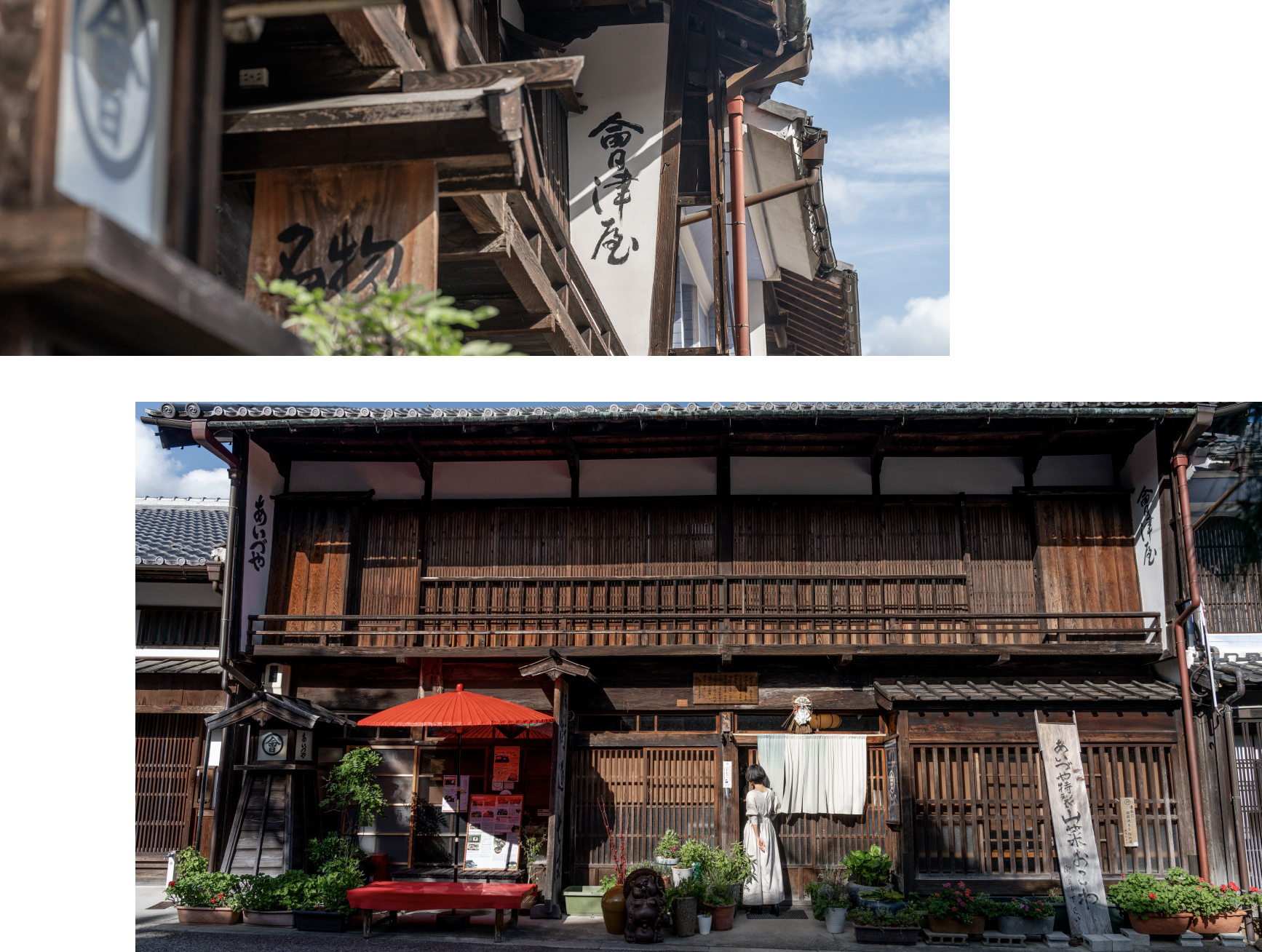
The former Ohatago Yamadaya is now Aizu-ya, a restaurant where you can enjoy wild vegetable rice steamed in an oven to a chewy texture and soba made with carefully selected dashi stock.
In fact, the Yamadaya building has a lineage that has been passed down from the Edo period to the Reiwa period, changing its form in various ways.
When we spoke to Yukari Yamaguchi, the owner of Aizuya, she said, ``This building has been passed through the hands of various people since the Tenpo era (1830-1848), and has undergone repeated reincarnations while preserving its elegant structure. It is said that at one time it was a teahouse and at another time it was a barber shop.
The reason why this historic and elegant building has survived despite changing its shape is probably because of the respect that the people who inherited it had for the great inn, Yamadaya.
In front of Aizuya is Jizo-in Temple, where it is said that Gyoki enshrined the Jizo Bodhisattva in order to save people from an epidemic in 741. The temple is famous for the saying, "Seki no Jizo is dressed in a furisode kimono and taken to be the son-in-law of the Great Buddha of Nara," and for being home to the oldest Jizo Bodhisattva in Japan.
"There are ukiyo-e prints from the Edo period that depict many people visiting Jizoin and staying at Yamadaya," says Yamaguchi.
The view of the road from Aizuya's interior gives you a sense of the same elegance that existed in Edo and still does today. It seems that many tourists still come here for the historical scenery, Aizuya's special set meals, and the historic ukiyo-e and nishiki-e preserved at Aizuya.
